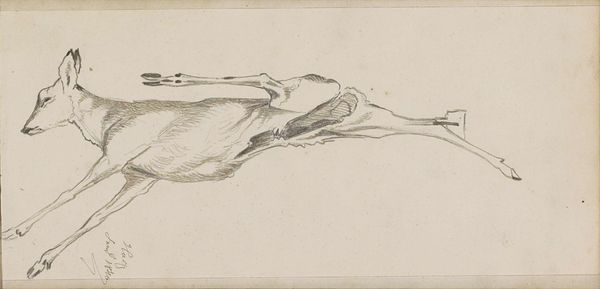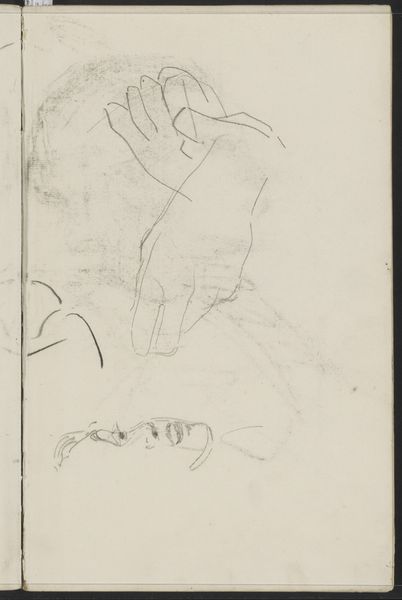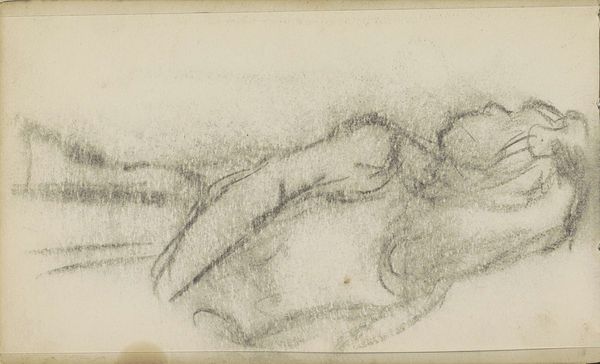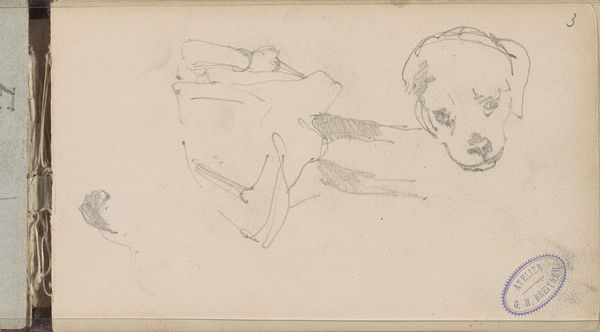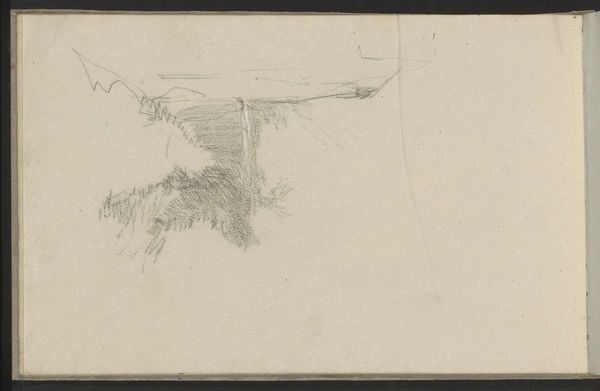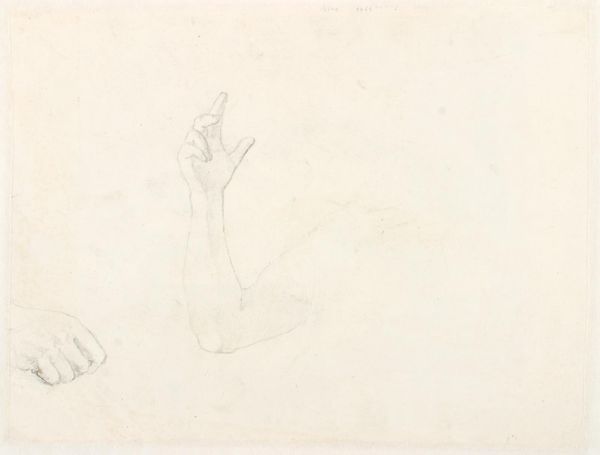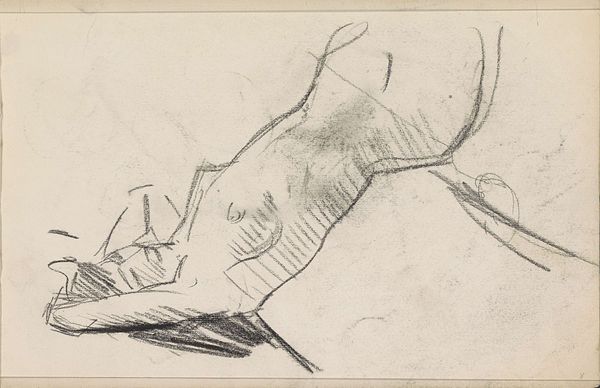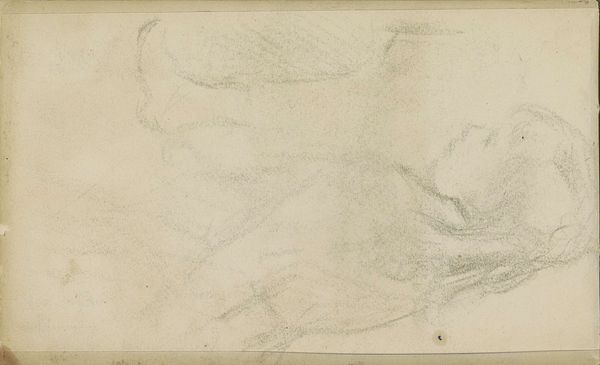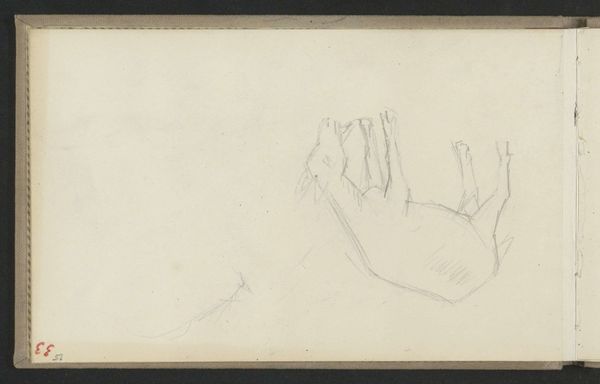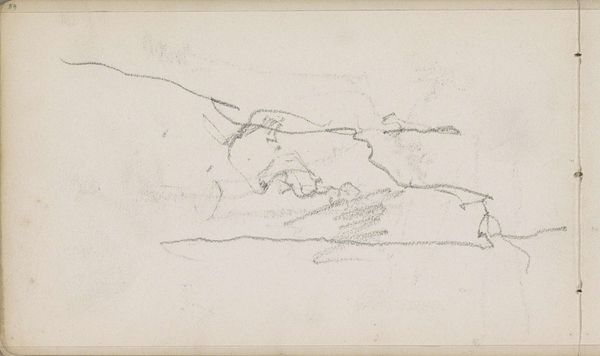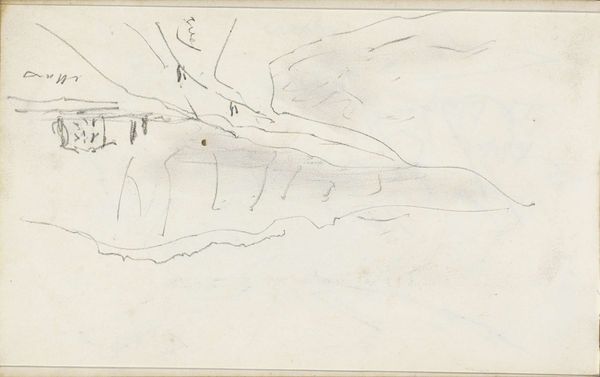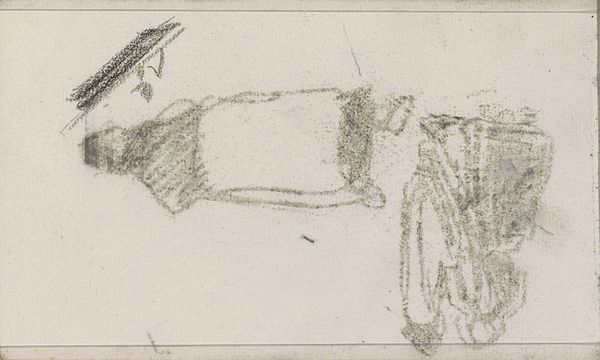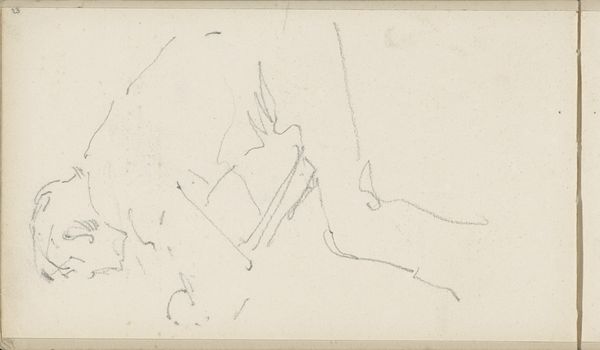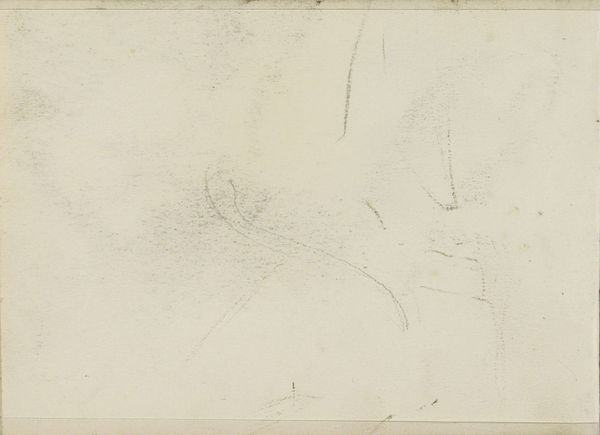
Copyright: Rijks Museum: Open Domain
Curator: This sketch at the Rijksmuseum is by Isaac Israels, titled "Reclining Female Nude," and was likely created sometime between 1875 and 1934. It's executed in pencil on paper. What’s your first reaction to it? Editor: Well, I see fragility. The pale tones and quick, almost hesitant lines give it an air of vulnerability, both in the subject and the act of creation. The figure feels quite fleeting and ethereal, a ghost. Curator: It’s interesting you mention fragility, given the materials at play. We're looking at a drawing, pencil on paper—common, readily available materials. There's an accessibility to drawing as a medium. No precious oil paints here. Editor: Exactly! This choice amplifies that feeling. Pencil marks on paper--the body as something provisional, transient. But how does the reclining nude as an established subject play in that context? It reminds me of Odalisque depictions, except the symbolism feels quite different here. Curator: Indeed. The Odalisque traditionally suggests exoticism, a colonial gaze objectifying the East. Here, it lacks that opulent, controlled composition. Israels likely was much more interested in the fleeting effects of light and capturing an immediate impression, not an idealised, posed figure. You can almost imagine the quick movements of his hand trying to grasp a moment in time. Editor: I think that impulse resonates. But what’s also compelling is this kind of erasure, or perhaps fading into the ground – suggesting vulnerability. It doesn’t flaunt. Curator: I see your point. Rather than portraying an idealized female form meant for consumption, the rawness of the medium highlights a certain labour of observation. Editor: So, where the classical nude celebrated perfection, this feels much more human and imperfect? Curator: I'd agree, and further point to this particular tension that emerges when the artwork seems immediate. The artist is not really concerned with traditional ideas surrounding the gaze, the labour process is centered and in plain sight. Editor: Ultimately, the pencil rendering adds another layer of meaning beyond just an aesthetic exercise. Curator: Right. It opens us up to think more about the act of observing. Editor: An interesting perspective shift – it challenges traditional modes of depiction while suggesting temporality. Curator: Agreed. That delicate dance between form and execution leaves you reflecting on vulnerability, medium, and intent.
Comments
No comments
Be the first to comment and join the conversation on the ultimate creative platform.
